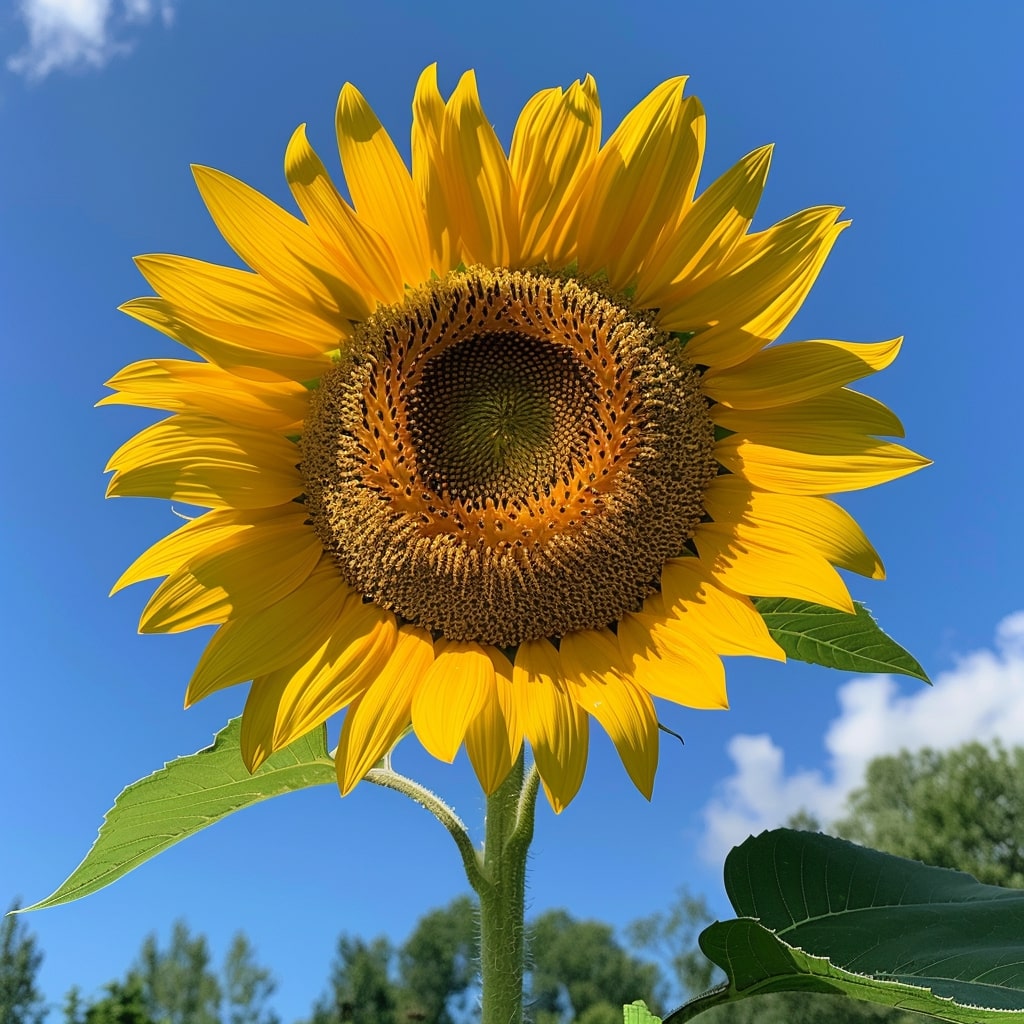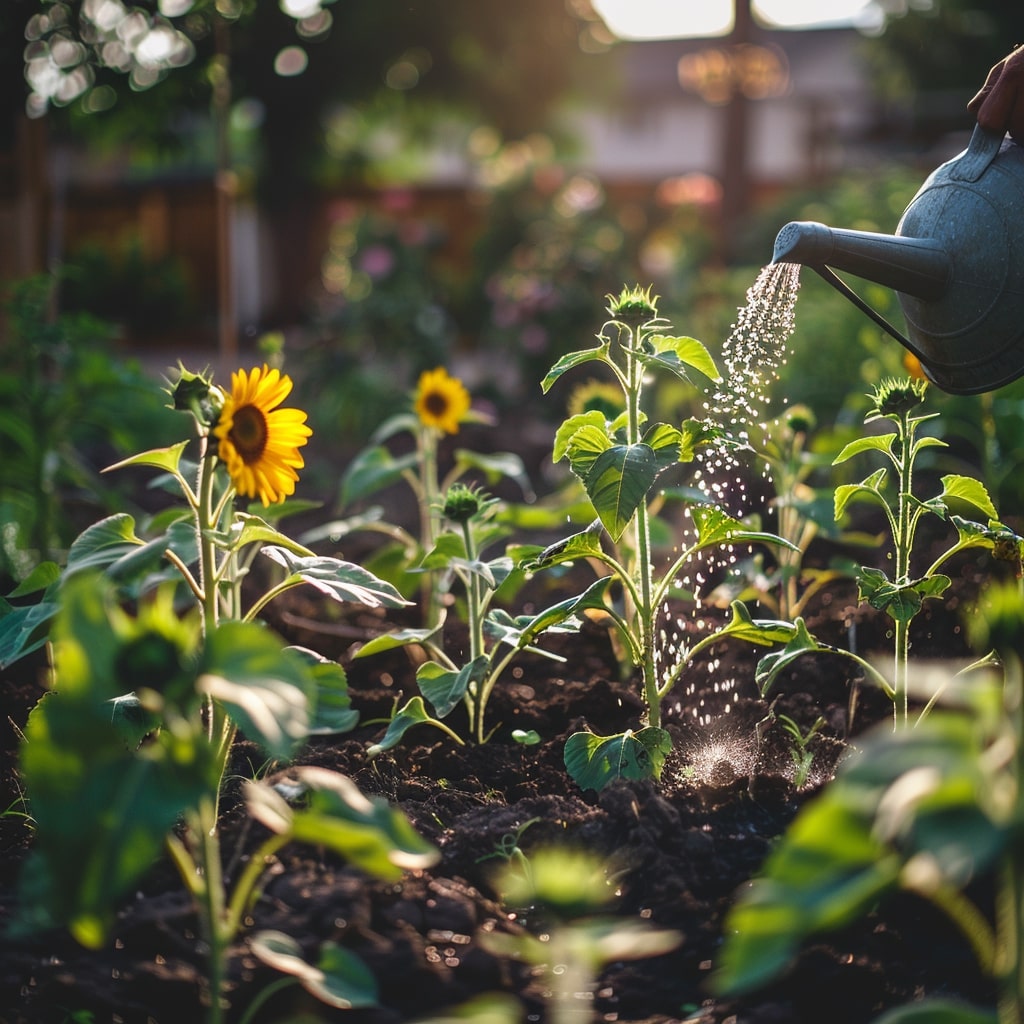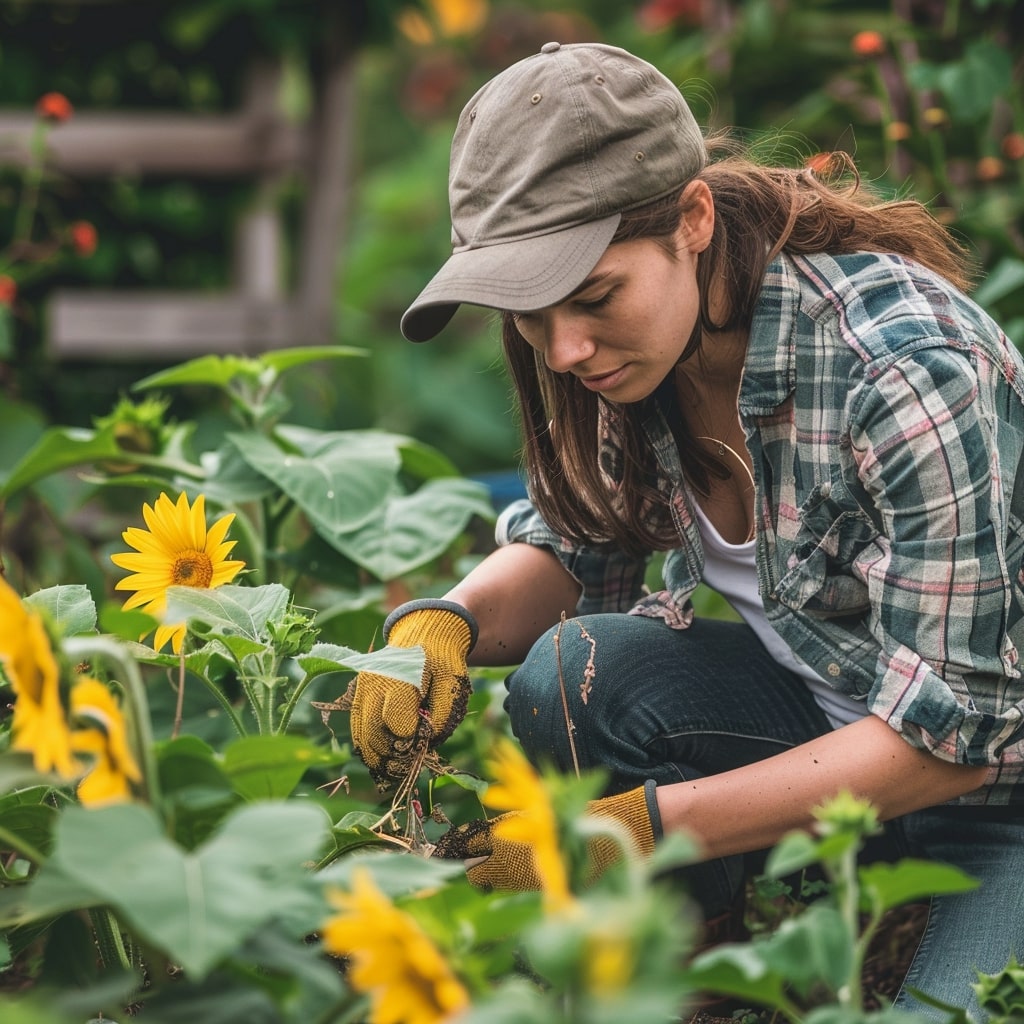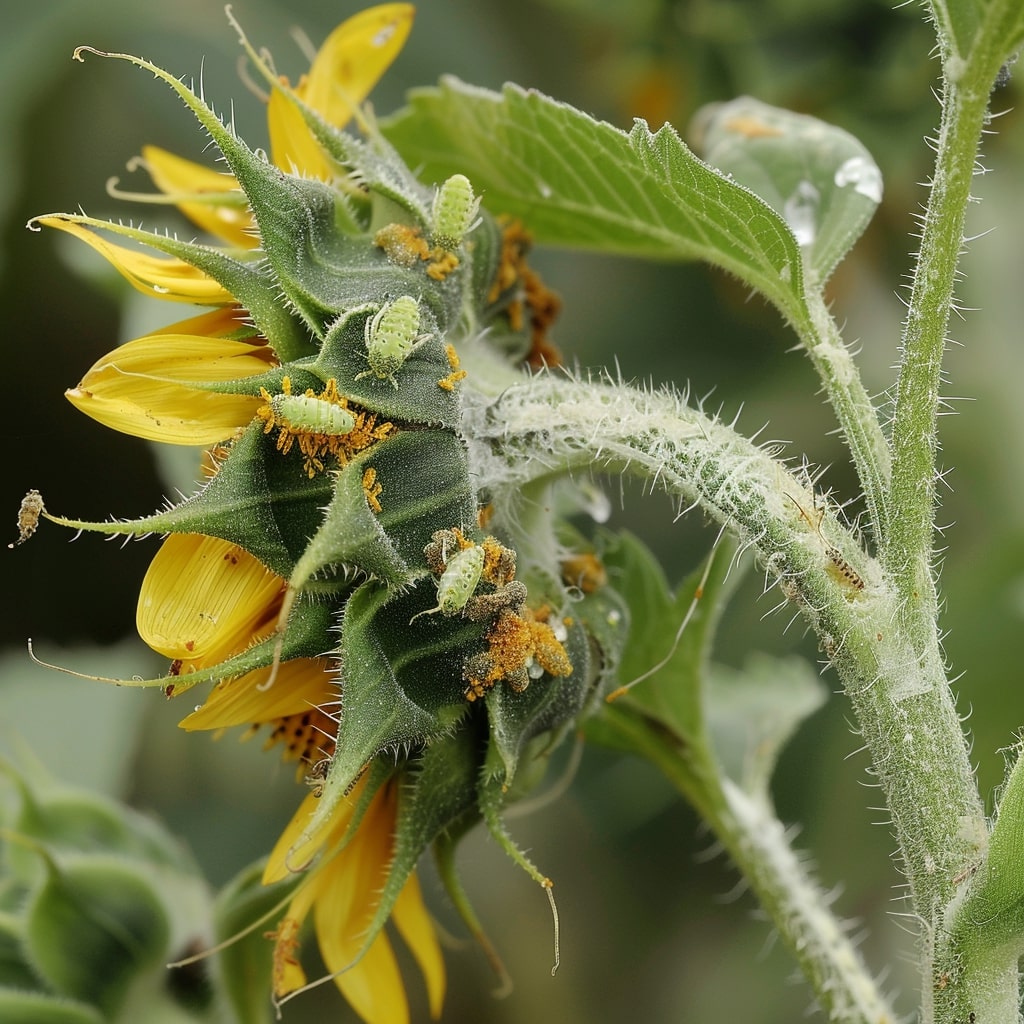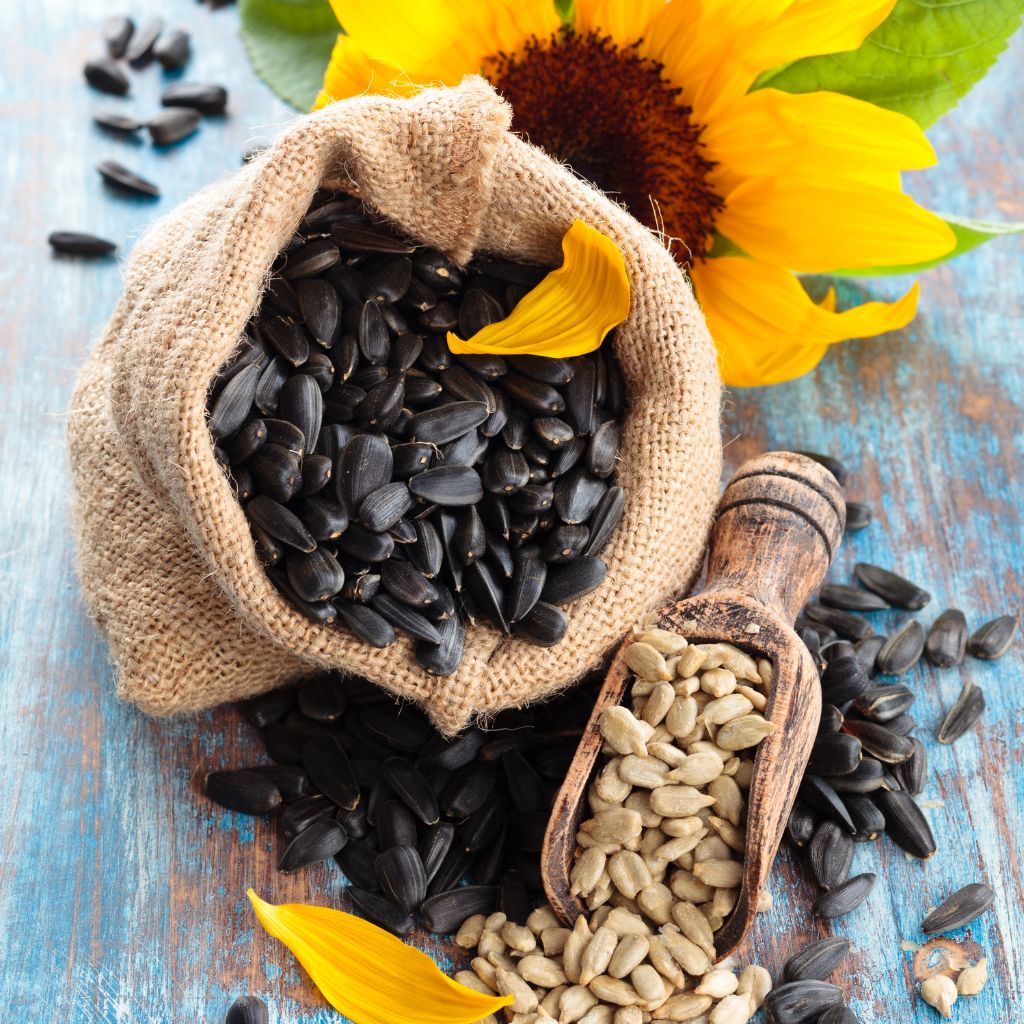Imagine a garden brimming with sunflowers, their golden heads swaying gently in the summer breeze. These cheerful giants are a joy to grow, whether you’re an expert gardener or just getting your hands dirty for the first time.
In this guide, we’ll share insider tips and tricks for nurturing vibrant, healthy sunflowers, covering everything from soil prep to watering and pruning. Ready to bring a burst of sunshine to your backyard? Let’s get started!
Understanding Sunflowers
Species and Varieties
Sunflowers are a member of the Asteraceae family, which includes daisies, asters, and chrysanthemums. There are over 70 species of sunflowers, and they come in a variety of sizes, shapes, and colors.
Here are a few popular types to consider:
1. Giant Sunflowers: These can grow up to 16 feet tall and have large, yellow flowers that can be up to 2 feet in diameter. Examples include ‘Mammoth’ and ‘Russian Giant.’
2. Dwarf Sunflowers: These are smaller and more compact, ideal for container gardens or small spaces. Varieties include ‘Teddy Bear’ and ‘Sunspot.’
3. Red Sunflowers: Featuring deep red petals and a dark center, these sunflowers provide a striking contrast to traditional yellow blooms. ‘Velvet Queen’ is a popular variety.
4. Multi-headed Sunflowers: These have multiple flower heads on a single stem, creating a stunning display. ‘Autumn Beauty’ and ‘Italian White’ are excellent choices.
Historical Significance
Sunflowers have been cultivated by humans for thousands of years. Native to North America, they were first domesticated by the indigenous people of the region, who used them for food, medicine, and oil.
The sunflower was then introduced to Europe by Spanish explorers in the 16th century, where it became a popular ornamental plant. In the 19th century, Russian farmers began cultivating sunflowers for their oil, which is still used today in cooking and cosmetics.
Sunflower Anatomy
Sunflowers are known for their distinctive yellow petals and dark centers, but there is more to these plants than meets the eye. The flower head, or capitulum, is actually made up of hundreds of individual flowers, called florets.
The outer petals of the sunflower are sterile and serve to attract pollinators, while the inner florets contain both male and female reproductive organs. The center of the flower, known as the receptacle, is where the seeds are produced. Sunflowers have a taproot system, which allows them to absorb water and nutrients from deep within the soil.
Overall, understanding the different species and varieties of sunflowers, their historical significance, and their anatomy is crucial for successfully growing these beautiful plants.
Planting and Care
When to Plant
Sunflowers thrive in warm weather and should be planted after the last frost when the soil has warmed to at least 55°F. Depending on the variety, they typically take 70 to 100 days to bloom.
They can also be started indoors 2-3 weeks before transplanting. Plant the seeds 1-2 inches deep and 6 inches apart. If starting indoors, use peat pots or other biodegradable containers to avoid damaging the delicate roots during transplanting.
Selecting the Right Location
Sunflowers need full sun to grow properly, so choose a spot that gets at least six hours of direct sunlight per day. Ensure the soil is well-drained to prevent waterlogging.
Preparing the Soil
Sunflowers prefer loose, well-drained soil rich in organic matter. Before planting, loosen the soil to a depth of 12 to 15 inches and remove any weeds or debris. Mix in compost or well-rotted manure to improve soil fertility and texture.
Planting the Seeds
Plant sunflower seeds about 1 inch deep and 6 inches apart. For giant varieties, space the seeds 2 to 3 feet apart. Sunflowers have extensive root systems and need plenty of room to grow. Water the seeds immediately after planting and keep the soil moist until the seeds germinate, usually within 7 to 10 days.
Caring for Sunflowers
Watering
Sunflowers are relatively drought-tolerant but need regular watering, especially during dry spells. Water deeply once or twice a week, ensuring the soil remains moist but not waterlogged.
Fertilizing
Sunflowers are heavy feeders and benefit from regular fertilization. Use a balanced fertilizer (e.g., 10-10-10) every 4-6 weeks. Organic options like compost or well-rotted manure are also effective.
Pruning and Staking
While sunflowers don’t require much pruning, removing dead or damaged leaves can help prevent disease. Tall varieties may need staking to support their heavy heads, especially in windy areas.
Managing Pests and Diseases
Sunflowers are relatively pest and disease-free, but they can be susceptible to fungal diseases in humid conditions. To prevent fungal growth, avoid overhead watering and ensure adequate air circulation around the plants.
Common Pests
- Aphids: Small, sap-sucking insects that can cause stunted growth. Control them with insecticidal soap or organic treatments.
- Cutworms: Caterpillars that feed on young stems. Protect seedlings with collars or organic pest controls.
- Sunflower Moths: Lay eggs on flower heads, and the larvae feed on seeds. Use insecticidal soap or organic treatments as needed.
Diseases
- Powdery Mildew: Appears as a white, powdery coating on leaves. Improve air circulation and water at the base of plants to prevent it.
- Rust: Causes orange or brown spots on leaves. Remove affected leaves and use fungicides if necessary.
- Verticillium Wilt: A soil-borne disease causing leaves to wilt and yellow. Rotate crops and plant resistant varieties.
Maximizing Growth
Fertilization Strategies
Sunflowers are heavy feeders and require regular fertilization to maximize growth. It is recommended to apply a balanced fertilizer, such as a 10-10-10 or 20-20-20 formula, every two to three weeks during the growing season. Be sure to follow the manufacturer’s instructions for application rates.
In addition to regular fertilization, incorporating organic matter, such as compost or aged manure, into the soil before planting can provide a slow-release source of nutrients throughout the growing season.
Supporting Tall Varieties
Tall sunflower varieties can benefit from additional support to prevent them from toppling over in strong winds. One common method is to insert a stake or bamboo pole next to the plant and tie the stem to the support using a soft, flexible material such as twine or garden tape.
Another option is to use a cage made of sturdy wire or mesh to surround the plant and provide support from all sides. This can also help deter pests and provide a convenient structure for attaching additional supports, such as netting or trellising, if needed.
By following these simple strategies, gardeners can help ensure their sunflowers reach their full potential and produce beautiful blooms throughout the growing season.
Harvest and Post-Harvest
Determining Harvest Time
Determining the right time to harvest sunflowers is crucial to ensure the seeds and blooms are at their best. The ideal time to harvest sunflowers for seeds is when the flower head has turned brown and the back of the head is yellow. If the head is still green, the seeds will not be mature enough and will not germinate. For harvesting blooms, it is best to do so when the petals have fully opened and the flower is at its peak.
Harvesting Seeds and Blooms
To harvest sunflower seeds, cut the head from the stem with a sharp knife or scissors. Then, place the head in a paper bag or hang it upside down in a dry, well-ventilated area until the seeds are completely dry. Once dry, remove the seeds from the head and store them in an airtight container in a cool, dry place.
For harvesting blooms, cut the stem at an angle with a sharp knife or scissors. Remove any leaves that will be below the water line in the vase. Place the blooms in a vase with fresh water and change the water every two days to ensure the flowers last longer.
Storing and Preserving
To preserve sunflower blooms, hang them upside down in a dry, dark place until they are completely dry. Once dry, they can be used in a variety of crafts and decorations.
To store sunflower seeds, place them in an airtight container in a cool, dry place. Sunflower seeds can last up to a year if stored properly. If you want to save seeds for planting, make sure to label the container with the variety and date harvested.
Growing sunflowers is a delightful and rewarding experience. By choosing the right varieties, providing proper care, and managing pests and diseases, you can enjoy these beautiful blooms all summer long. Whether you’re aiming for towering giants or compact dwarfs, sunflowers will brighten your garden and bring joy to your outdoor space. Happy gardening!


